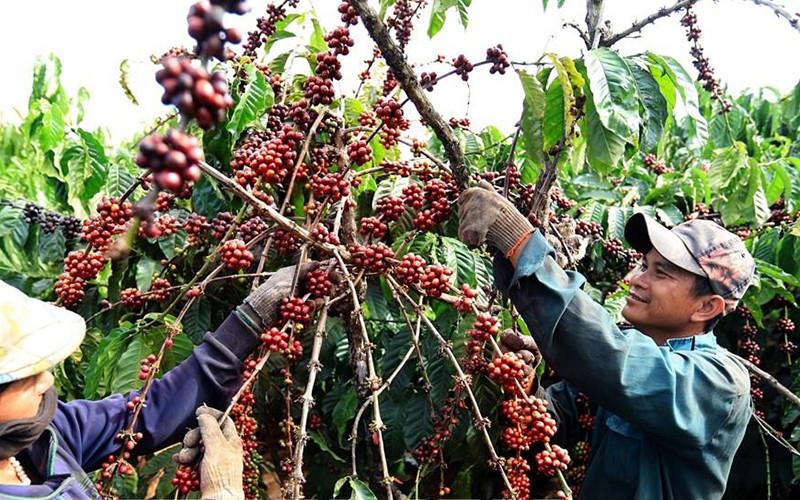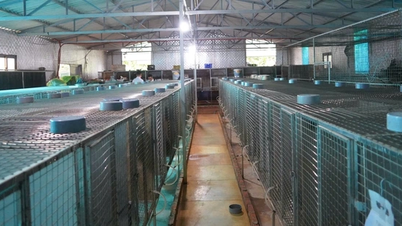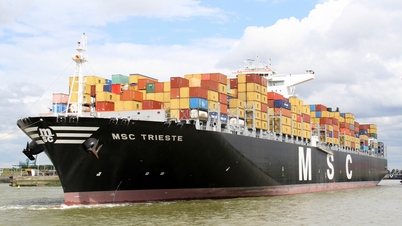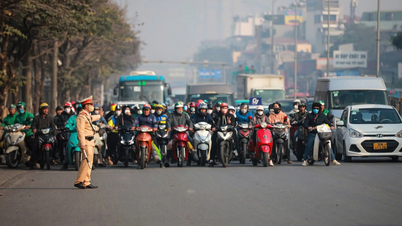
Meanwhile, the prices of two coffee products continue to increase sharply due to the continued pressure on supply from Vietnam and Brazil, causing the market to worry about the possibility of a shortage in the coming months.
Wheat prices fall to lowest level since late October
Yesterday’s session saw red covering the agricultural market when all 7 items in the group weakened simultaneously. In particular, Kansas wheat prices fell to the lowest level since late October, stopping at 186 USD/ton while Chicago wheat prices also lost more than 1.8% to 193 USD/ton.

According to the latest report of the International Grains Council (IGC) released yesterday, total grain production in the 2025-2026 crop year is forecast to reach about 2.43 billion tons, up 0.2% from the October forecast and higher than the global consumption demand of 2.4 billion tons. This is the first time in the past 4 years that global grain inventories are expected to increase again, creating downward pressure on prices of this commodity.
The increase in supply mainly comes from three major commodities: wheat, corn and barley. Of which, wheat production was updated by the IGC to 830 million tons, up by 3 million tons thanks to improved supplies from Kazakhstan and Argentina.
The latest forecast shows Kazakhstan’s wheat output rising to 19.1 million tonnes, up more than 8.5% from last month’s forecast. Meanwhile, Argentina is also expecting a new crop of 23.5 million tonnes, up nearly 30% from the previous season.
The wheat market is also keeping a close eye on the latest developments in the Russia-Ukraine conflict. Positive signs towards a ceasefire and peace process have helped ease concerns about supply disruptions from the Black Sea region, which is a key export route for both countries.
In particular, Deputy Minister of Economy , Environment and Agriculture of Ukraine, Mr. Taras Vysotskiy, recently said that Kiev will not impose wheat export restrictions in the 2025-2026 crop season, thanks to higher estimated harvest yields and the current low early-season export rate.
At the same time, Russia’s grain supply has also seen a notable change, with exports through Baltic Sea ports increasing by 30% this year. This transport route has become an important alternative to the traditional export route through the Black Sea, which has been severely affected by the war situation in Ukraine.
The above factors create a context of abundant supply, which is the main cause of pressure on grain prices, causing this market to continue to face a downward trend in the coming time.
Coffee prices continue to rise amid supply concerns
On the other hand, the industrial raw materials group recorded overwhelming buying power with 5 items closing in the green. Of which, Arabica coffee prices edged up nearly 0.5% to 8,961 USD/ton while Robusta coffee prices soared more than 2.5% to 4,631 USD/ton.

According to MXV, concerns about coffee supply in producing countries such as Vietnam and Brazil still exist, thereby promoting the price increase of these two commodities.
The Central Highlands - the Robusta coffee growing capital of Vietnam and the world - is experiencing a period of extreme weather with heavy rain lasting for many days. Floods, landslides and floods have caused heavy damage to local people and many coffee areas have been seriously affected. Many coffee gardens have been broken and cannot be harvested, putting the coffee supply of Vietnam and the global market at risk of a sharp decrease in the next few months.
Not only Vietnam is affected, the Brazilian coffee market is also facing many difficulties. According to the Brazilian Coffee Exporters Association (Cecafe), the amount of coffee granted certificates of origin is currently only 2.1 million bags, much lower than forecast. This causes the forecast of exports in the month to continue to decline sharply, possibly lower than the 4.1 million bags of the previous month, creating more pressure to tighten supply in the world market.
In addition, coffee inventories on the ICE exchange have also continued to decline, contributing to supporting coffee prices. US tariffs on coffee imported from Brazil continue to push inventories on the ICE exchange down. ICE-managed Arabica inventories fell to a 1.75-year low of nearly 400,000 bags yesterday. Meanwhile, Robusta inventories on ICE also fell sharply, to a four-month low of 5,640 lots.
In the domestic market, domestic coffee prices today (November 21) fluctuated between 114,500 and 115,500 VND/kg. In key areas of Lam Dong province such as Di Linh, Lam Ha and Bao Loc, the purchase price was stable at 114,500 VND/kg. In Cu M'gar area (Dak Lak), it was 115,500 VND/kg, while in Ea H'leo and Buon Ho, it fluctuated around 115,400 VND/kg. In Dak Nong, the purchase price in Gia Nghia and Dak R'lap remained at 115,400 and 115,500 VND/kg.
Updated November 21, 2025
Source: https://laichau.gov.vn/tin-tuc-su-kien/chuyen-de/tin-trong-nuoc/gia-hang-hoa-the-gioi-tiep-tuc-bien-dong-manh-theo-cung-cau.html






![[Photo] Next to the "mountain of trash" after the flood, Tuy Hoa residents strive to rebuild their lives](/_next/image?url=https%3A%2F%2Fvphoto.vietnam.vn%2Fthumb%2F1200x675%2Fvietnam%2Fresource%2FIMAGE%2F2025%2F11%2F24%2F1763951389752_image-1-jpg.webp&w=3840&q=75)































































![[Photo] General Secretary To Lam attends the National Conference to review the Party's inspection, supervision and discipline enforcement work in 2025 and the 13th Congress term](https://vphoto.vietnam.vn/thumb/402x226/vietnam/resource/IMAGE/2025/11/24/1763967570884_anh-man-hinh-2025-11-24-luc-13-59-19.png)






























Comment (0)